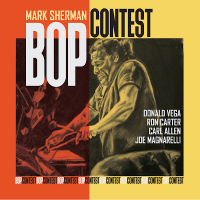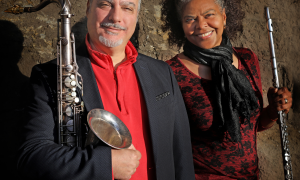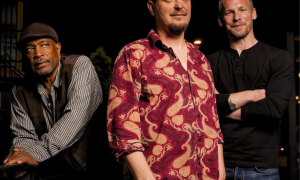His colleagues at Greystone included Terrence Malick, David Lynch and Schrader, the program's lone film critic. Even among these and other strong-willed talents, Kaye projected a formidable persona a freebase of East Village cool and Topanga weirdness.
“Stanton," remembers school contemporary Carroll Ballard, “was one of the greatest hustlers on Earth he was absolutely charming." Ballard, who would become a director (The Black Stallion, Fly Away Home, Duma), had attended UCLA with Kaye and remembers his ability to talk himself into any party he wanted.
“He came by my place on the beach once," Ballard remembers. “We drank some wine, and he talked about LACMA's opening party. He said, 'Come on, let's go over there I can get us in.' He somehow got us in we crashed one of the damnedest parties I'd ever seen."
The AFI came into being in 1967 thanks to funding from Lyndon B. Johnson's newly created National Endowment for the Arts. AFI's founding director, George Stevens Jr., saw a chance to use federal money not only to study the history and theory of film, but also to fund independent films and connect with the New Hollywood of the Warren Beattys and Robert Townes that was boisterously emerging from the canyons and flatlands to the east of Greystone.
“It was much different then," Schrader says of AFI. “Everything was free and it had a 2-1 teacher-to-fellow ratio. It was more like a club than an institute." (Neither Stevens nor anyone associated with AFI, past or present, responded to repeated interview requests for this article.)
By 1969 Stevens was ready to undertake the school's biggest gamble the complete funding of a film project chosen from among its fellows' scripts. The film would not simply be a big-budget student movie the finished product would receive commercial distribution, people would see it in theaters. And money could be made there was that too. Kaye, a high school dropout, signed a real director's contract to inaugurate the institute's golden age of federally funded filmmaking, beating out the bright young film B.A.s from UCLA and USC.
“I wasn't really annoyed, because I thought he was a genius who was going to be the next big thing," says Ballard, who at the time was hoping AFI would shoot a script he'd written about Thomas Jefferson. Others were less sanguine.
“The AFI at that time, they had some really talented people," says veteran cinematographer Caleb Deschanel (The Right Stuff, Titanic). “I just don't know why they picked him." Paul Schrader feels he knows the reason. “AFI operated as George Stevens Jr.'s club," he says. “George's idea was that it would be a little boutique studio. And Stanton was his fair-haired boy."
Kaye had once wanted to make a movie about pioneers from the doomed Donner Party, but the story he and Stevens settled on was an allegorical Western concerning a mining enterprise on the frontier though not any frontier that John Ford fans would have recognized. “It was set in the scientific future, it had robots in it," Kaye recalls. “A small group of disenfranchised people in this small town come at night and try to tear apart the mining operation."
Specifically, the disenfranchised were a tribe of Indians who had been forced off their ore-rich land by private speculators who surrounded the mine with a giant red, electrified fence. The story focused on them and a young man who comes West and falls in love with the wife of the mine's overseer. It was inspired by persistent legends, fueled by Southwestern cave petroglyphs, of Aztec gold having been buried in North America.
“In Pursuit of Treasure" was shot over 11 weeks in 1970 with Panavision cameras in Kanab, Utah, with union waivers, a $220,000 budget and even logistical help from the state's National Guard. It featured young actors Scott Glenn, Elizabeth Hartman and Bonnie Bedelia, along with such veterans as Marc Lawrence and Jay Silverheels, the Mohawk* actor known as Tonto in the “Lone Ranger" TV series. Czech cinematographer Bedrich Batka would eventually shoot most of the principal photography, with Deschanel heading up the second unit.
Almost from the start, however, the project fell behind schedule, eventually imploding, its budget ballooning to $408,000. Everything seemed to go wrong. A wall constructed for a set blew down during a storm, and night scenes that had been scheduled to be shot on Hollywood sound stages were attempted on location only to be ruined by the sound of crickets. One critical scene was shot with a grain of sand in the camera's film gate, resulting in a long scratch trailing down the middle of the footage. Kaye ended up firing his original cinematographer, Stevan Larner, who had once been his UCLA film instructor.
In order to simulate a flock of dead sheep, live sheep had to be repeatedly knocked out with injections for numerous takes, with no clear prediction of when they'd awake. (Some didn't.) Kaye's girlfriend left him during the shoot, but worse, his father died. Kaye had cast him in the role of an old miner, but Edward never made it to Utah although, Kaye says, the old man would recite his lines as he lay in his bed at the UCLA Medical Center.
Gill Dennis, an AFI fellow and future screenwriter (Walk the Line), was then married to actress Hartman and went to Utah to visit the shoot in Kanab, which had been used as a movie location since silent films. (Parts of Planet of the Apes were shot there.) He arrived to find AFI fellow David Lynch painting bricks gold and a crew that was completing only two setups a day. Not to mention a demoralized Kaye, who was curled up in a sleeping bag while his crew attempted the complicated tasks of lighting and shooting the insides of caves that figured in the story.
“It was a nightmare," remembers Deschanel. “You really had the feeling the movie wasn't going anywhere virtually everyone involved felt the film was a mistake."
As the project slipped away from Kaye, who had never shot a feature in color, let alone with 35 mm anamorphic lenses, he realized he was in over his head with no on-site producer or circle of friends to support him.
“I was very depressed," Kaye says. “I couldn't control the film I wanted to." Instead, he felt isolated in his tent as the film crew, in an effort to get the project finished, took over more of the decision making.
After it was nominally completed, “In Pursuit of Treasure" went through three edits, with still no final cut anywhere in sight by 1972. It had been a year and a half since the film had been green-lighted a film that now climaxed with the massacre of the white miners by Indians, followed by preparations for an apocalyptic battle between the Indians and the U.S. Army.
“The first time George saw it," Kaye remembers, “he said, 'This isn't the film I thought we were getting. I thought this was a film about a boy who falls in love with nature.' After a while, we could not talk to each other."
AFI wrote the project off as a total loss.
“Cancer is terminal, but at least it ends," George Stevens Jr. is reported to have remarked about 'In Pursuit of Treasure's' ongoing troubles. With that, AFI thanked Kaye for his effort and took the film away from him.
“They hated me because I was not a Hollywood filmmaker," Kaye says. At this point Kaye might have been forgiven by the institute, his film debacle written off as youthful hubris. In an era famous for such chutzpah, his audacious failure might still have opened doors for him in Hollywood on some level it was a collegiate harbinger of Heaven's Gate.
“Had 'In Pursuit of Treasure' made money had it been 'Easy Rider'," says Schrader, “it would have been different, everything would have been validated."
Later in 1972, however, Kaye stole the AFI's work print and drove with the 10 reels in the back seat of his car to New York, stopping in Kansas City to visit director Robert Altman. Taking Altman's advice, Kaye arranged a showing of his work in progress in the basement screening room of Rizzoli Bookstore in Manhattan. Kaye's bad luck continued in New York, as his art-world audience was politely unimpressed with the very rough cut that had yet to be scored. Kaye had to borrow $20 just to get the projectionist to rewind his film.
“So there I was," he remembers. “Broke, busted the film no good. When I got back [to L.A.], a friend told me, 'The FBI is looking for you.'" The suits at AFI had discovered “In Pursuit of Treasure" was missing.
Today, when he looks back on what went wrong, Kaye claims that the “older guys" who ran AFI wanted to keep Hollywood alive and viable in a new era but had no idea what was going on in that turbulent period.
“I was living in a time when revolution was on everybody's tongue," Kaye says. “Fashion was out the door, replaced by anything goes." AFI's impulse, says Brandon French, who helped Kaye rewrite much of the “Treasure" screenplay from her Berkeley home, was to cut and run rather than work out a way to salvage his film.
“I was a very sensitive person," says Kaye. “Even though I might have been an outrageous asshole, what happened to me at the AFI was so inordinately wrong. I went away feeling pretty beaten up."
Kaye and AFI reconciled, with the institute regaining possession of the work print, while Kaye retained custody of his last edit. He says that his subsequent attempts to recut the film have put its sound almost hopelessly out of sync, and claims AFI lost the original magnetic soundtrack making any attempts to reconstruct Treasure a Herculean (and expensive) project.
If you look at Kaye's silent fragments of “Treasure" today, it's easy to see his promise as a director. Once you recover from the shock of seeing a very young Glenn, Hartman and Bedelia, you're impressed by the maturity of the director's outdoor compositions and his ability to use Panavision to create not voyeuristic pageantry, but a heroic landscape filled with Indians still trying, in a “scientific future," to win back their stolen land. These are not the claustrophobic urban perspectives of Brandy in the Wilderness but, occasionally at least, quotations from an imaginary dialogue between Ford and Eisenstein.
At other times, though, the film seems very conventional and commercial in its cutting we're suddenly a long way from the experimental horizons of Kaye's early work. Kaye says that the more he re-edited under AFI pressure, the more he tried to please the institute with a mainstream product. Perhaps it's no accident that in Treasure, Kaye seems most at home in Utah's wide-open, arid spaces, whose silences speak for themselves.
The very fact that Treasure looks like a “real movie" from 1970 suggests that Kaye, had he succeeded with his film, would've stood at an artistic crossroads: Remain true to the insular and narcissist temperament of Georg and Brandy, or embrace Hollywood? As it turned out, he would never have to face such a decision.
“In Pursuit of Treasure" would be AFI's first and last attempt to produce its own full-length feature films. Today, besides showering established movie personalities with awards, the institute is primarily known as a curatorial center and as the custodian of a number of copyrighted “best ever" lists. (AFI's 100 Years ... 100 Movies, AFI's 100 Years ... 100 Movie Quotes, AFI's 100 Years ... 100 Stars, etc.)
“Stanton played no small role in the downfall of the AFI," Schrader says today. “All of its resources and hopes had gone into his film." French sees the consequences of Kaye's failure differently: “I believe it destroyed his life as a filmmaker."
For more information contact All About Jazz.

























